Do you know the three body types of Ayurveda? Here’s how you can use this ancient practice during yoga to identify your Dosha and bring your body’s energy back into alignment.
Ayurveda, known as the sister-science of yoga, is an ancient healthcare system that was created 5,000 years ago by the sages of India. It’s a powerful mind-body health system that offers many practices for expanding self-awareness and cultivating a sense of balance in your life.
How Ayurveda Relates To You
Ayurveda means “wisdom of life” and links the five universal elements that are found in all living things – earth, air, fire, water, and ether (space) to individual constitutions known as doshas. There are three major doshas: Pitta (representing fire and air), Vata (air and space), and Kapha (earth and water).
Suffering from a sore neck, back and shoulders? Get our mobility guide to ease pain and soreness.
Get The FREE Mobility Guide To Fix Your Pain Today!
Each of us is born with a unique combination of the doshas, known as our Prakruti. Most of us have one dominant dosha with a second influencing dosha – this is known as a dual doshic constitution. For example, one could be dominantly Pitta, with Vata as their secondary dosha. The third dosha, in this case Kapha, may still be slightly present or it may not be at all. Everyone has their own unique Prakruti in its own state of balance.
As we go through life though, this balance can be affected by outside factors, such as our family, environment, stress, weather, habits, and more. This leads to a deviation from our natural state and leaves us feeling imbalanced and in a state known as Vikruti. Over time, this imbalance can lead to a variety of diseases, all depending on which doshas are in excess and for how long.
The Three Doshas
Take a look at the qualities of each dosha to see which you relate to most. There are also free online quizzes you can take to help you figure it out!
Pitta
- Energy: Digestion and metabolism.
- Elements: Fire and air.
- Body Type: Medium size and weight.
- When in Balance: Fiery, joyful, sharp intellect, tremendous courage and drive, great digestion, a lustrous complexion, and abundant energy.
- When Out of Balance: Angry, resentful, argumentative, and suffers from physical ailments like ulcers, inflammation, acid reflux, liver disease, and acne.
Vata
- Energy: Movement and force behind biological activity.
- Elements: Air and space.
- Body Type: Thin, with dry skin and hair, and cold hands and feet.
- When in Balance: Active, creative, flexible, and able to freely express and communicate.
- When Out of Balance: Suffers from anxiety, hypertension, restlessness, dry skin, joint pain, low back pain, and constipation.
Kapha
- Energy: Building, structure, and lubrication for the body’s smooth functioning.
- Elements: Earth and water.
- Body Type: Solid frame, excellent stamina.
- When in Balance: Calm temperament, graceful, loving, tolerant, calm and steady mind, a well-developed capacity to be fully present in life.
- When Out of Balance: Suffers from chest issues like asthma and emphysema and can feel overly heavy and slow, become overweight, and depressed.
Once you have an idea as to which dosha best represents you, try to integrate four of the best yoga poses for your dosha into your daily routine. They’ll help bring your energy back into balance, so you can feel more like yourself.
Yoga Poses for Pitta Dosha
Pittas should avoid yoga poses that are very heating, like holding inverted poses for a long time, and should aim to practice during cooler times of the day like dawn and dusk. They benefit from calming poses that help to release excess heat from the body, that help the liver and spleen, compress the solar plexus and open up the chest.
Pigeon | 8 breaths per side

This calming yoga pose helps the body to relax. Folding over the front thigh places gentle pressure on the solar plexus.
- Start in a tabletop position on your hands and knees.
- Pick up your right leg and bring the shin forward so that it goes across the top of your mat. Line up your right knee behind your right wrist and keep the foot slightly flexed.
- Straighten your left leg back behind you with the toes untucked. The foot should be straight in line with your left hip. You should feel a stretch through your right outer hip and lower back.
- Lift your chest and take an inhale to find a long spine. Then, exhale and walk your hands forward towards the top of the mat.
- Hold for 5-8 breaths, then repeat on the other side.
Modification 1: For extra tight hips, place a block underneath the hip of your forward leg. Modification 2: If the stretch feels too intense, stay upright instead of folding over.
Camel | 5 breaths
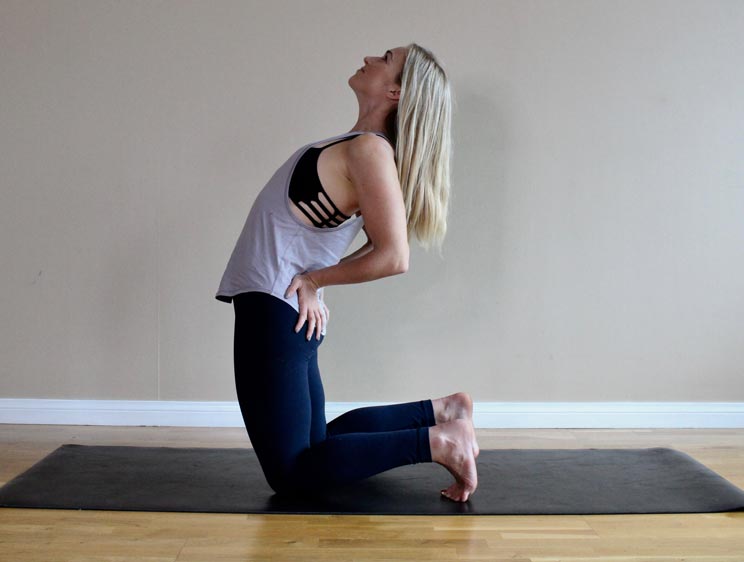
This heart-opening yoga pose breeds feelings of positivity in an unbalanced Pitta.
- Begin kneeling on your mat with your knees hips-width distance apart and your toes tucked under.
- Place your palms on your lower back so that your fingers point down. Engage your abs, quadriceps, and inner thighs.
- Take an inhale and press your palms down into your lower back as you lift your heart up towards the sky. Keep your hips stacked over your knees the whole time and keep the back of your neck long as you walk your gaze back along the ceiling, deepening the backbend.
- Hold for five breaths once the backbend feels like enough.
Supine Twist | 8 breaths
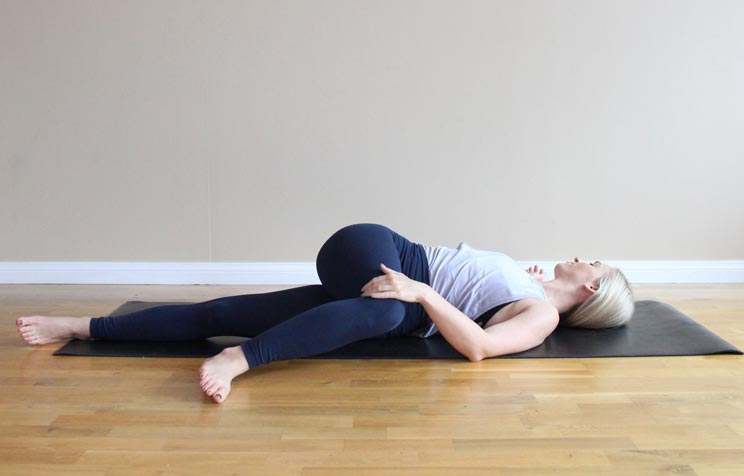
This calming pose compresses the solar plexus, liver, and spleen to bring Pittas back into balance.
- Start by lying down on your back.
- Hug your right knee into your chest. Then, reach your right arm out to the side with your palm face down.
- Guide your right leg across your body with your left hand, coming into your supine twist. Gaze to the right or straight up at the ceiling.
- Close your eyes and hold for eight slow, calming breaths.
Bound Locust Pose | 5 breaths
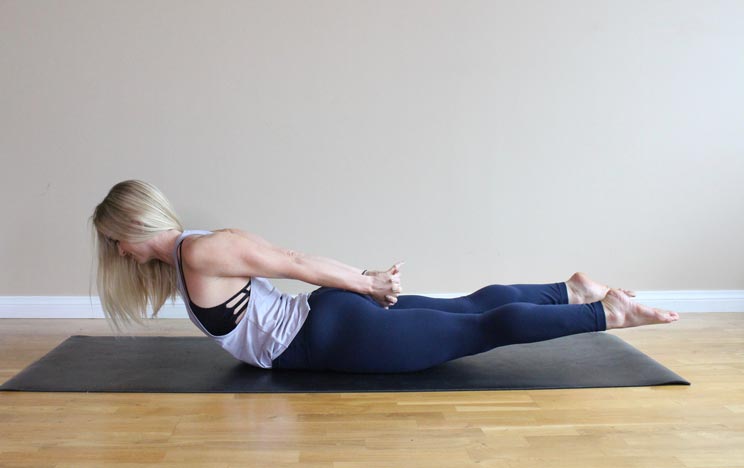
This pose opens up the heart while also compressing the liver and spleen.
- Start lying down on your belly. Place your forehead on the mat so that the back of your neck is long and free of wrinkles.
- Bring your legs together and interlace your hands behind your lower back. Tip: Use a strap or towel if it is uncomfortable to interlace your hands.
- Inhale to lift your chest, thighs, and feet off the mat. Continue squeezing your legs together and keep a small bend in your elbows. Try to lift your hands away from your body.
- Hold for five breaths, then gently release.
Yoga Poses for Vata Dosha
Fast-paced yoga practices like vinyasas or flows can aggravate Vatas who are prone to anxiety, overexertion, and fatigue. The best time for Vatas to practice yoga is early in the morning, around 4-6 am. Vatas should move deliberately and slowly in their yoga practice, extend the length of time in which they hold poses, and transition between the poses with conscious awareness. Poses that press on the pelvis are very healing for Vatas. This includes bends and seated poses. Focus on calming and grounding poses, and those which engage the lower back and thighs which are the major regions of the Vata dosha.
Tadasana | 8 breaths
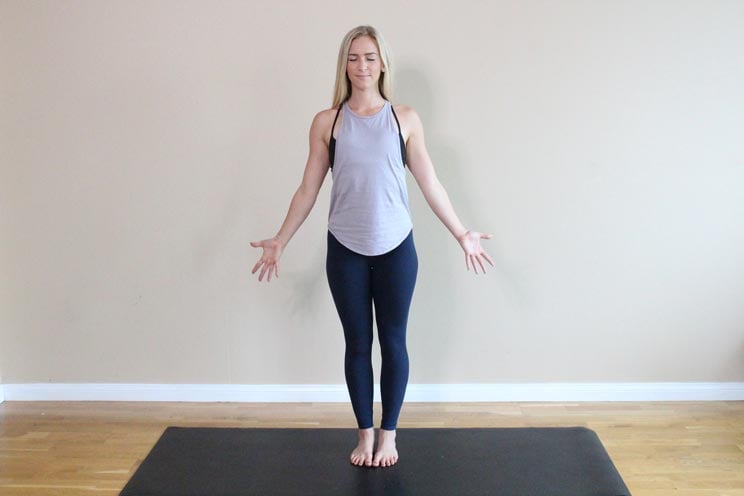
This basic yoga pose is extremely grounding and can help reduce anxiety and stress in Vatas.
- Begin standing on your mat with your arms down alongside your body.
- Bring your feet together so that your big toes come to touch and there is a slight space between your heels. Turn your palms to face forward and spread your fingers wide.
- Squeeze your shoulders down your back and draw your navel up and in towards your spine. Lift your quadriceps away from your kneecaps.
- Pick up your toes and spread them wide, feeling the arches of your feet lift. Then, keep the arch lifted as you lower your toes back onto your mat. Close your eyes and imagine tree roots growing out of the bottoms of your feet and rooting you down into the earth. Hold for eight slow and steady breaths.
Tree Pose | 5 breaths per side

This balancing pose helps to reduce anxiety and stress in Vatas through grounding and the engagement of the quadriceps.
- Start standing on your mat with your feet together. Bring your palms together in front of your heart. Draw your navel in and squeeze your shoulders down your back to bring you into an upright posture. Engage your quadriceps.
- Find a steady gaze point out in front of you. Root down into your right foot (like in Tadasana above) and slowly pick your left foot up off the mat.
- Place the sole of your left foot onto the inside of your right calf or thigh. Continue rooting down through your right foot and growing tall through the crown of your head.
- Hold for five steady breaths, then switch sides.
Warrior 1 | 8 breaths per side
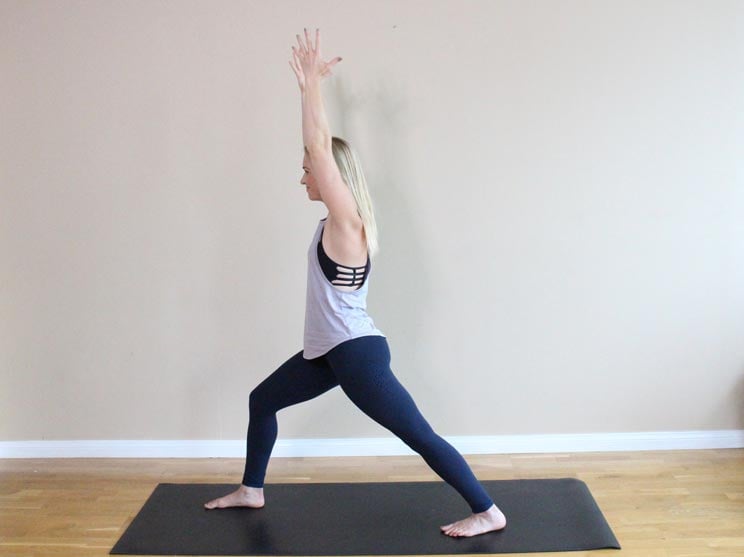
This pose is very grounding, but it also helps to build strength in the legs and core.
- Start standing at the back of your mat with your feet hips-width distance apart.
- Step your right foot forward about three feet. Keep your left heel down and turn your left toes out at a 45-degree angle. Square your hips and draw the front of your ribs together so that there is a natural curvature at your lower back.
- Bend into your right knee until you feel a stretch through the front of your left hip and your left calf. Engage your left quadriceps and keep the heel down the entire time.
- Reach your arms up overhead and turn your pinkies inward, raising your shoulders away from your ears.
- Hold for eight breaths, then switch sides.
Standing Forward Fold | 8 breaths
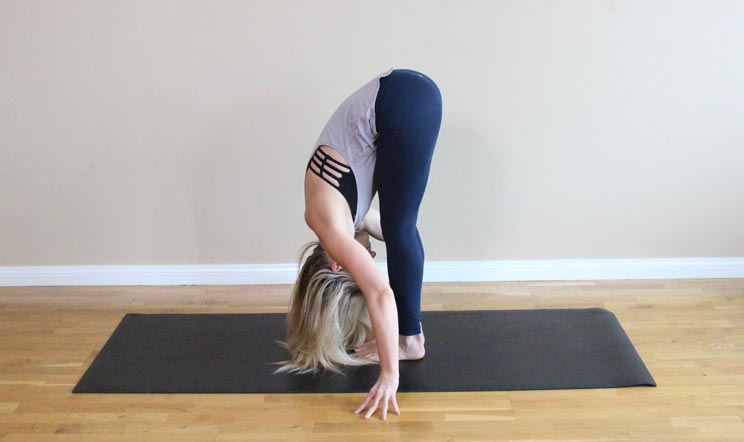
This calming forward fold reduces anxiety and opens up the hips and lower back.
- Start standing up with your feet hips-width distance apart.
- Bring a small bend to your knees. Then, exhale and fold forward with a flat back by hinging at the hips.
- Bend your knees enough to place your fingertips on the ground. Let your head hang heavy and allow the weight to shift slightly towards your toes.
- Hold for eight breaths.
Yoga Poses for Kapha Dosha
Since Kaphas have a tendency to become sluggish, they benefit from stimulating poses that energize and get their blood pumping. The best time for them to practice yoga is between 6 am and 10 am to keep them energized throughout the day. Poses that stimulate the glands in the chest and neck and energizing poses like standing poses and backbends, and long holds are great for Kaphas.
Bridge | 10 breaths

This gets the blood pumping and stimulates the glands in the neck and chest to help break up any congestion in the chest.
- Start lying down on your back with your knees bent and your feet on the floor. Place your arms down alongside your body with your palms facing down. Walk your feet hip-width distance apart and line your ankles up under your knees.
- Press your palms into the floor as you inhale and lift your hips up towards the ceiling.
- Draw your navel up and in towards your spine to engage your abs and keep your inner thighs engaged. Hold for 10 slow breaths.
Downward Facing Dog | 10 breaths
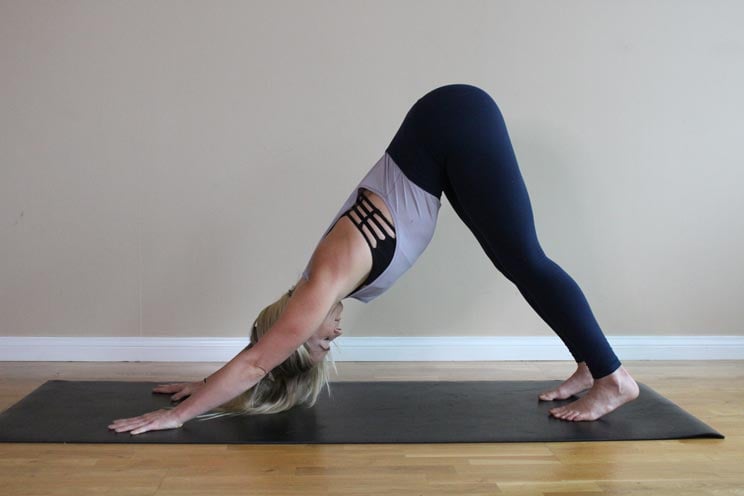
This inverted pose energizes Kaphas by getting the blood pumping and building strength in the upper body and core.
- Begin in a push-up position. Stack your shoulders above your wrists. Spread your fingers wide and press down through your knuckles to root down. Feel the space between your shoulder blades puff up towards the ceiling and firm up your quadriceps.
- Lift your hips up towards the sky, making a V-shape with your body. Keep a small bend in the knees and press your chest up and back towards your thighs.
- Hug your navel up and in towards your spine and reach your tailbone up. Focus on keeping your back straight, bending your knees as much as you need to.
- Hold for 10 breaths.
Chaturanga Dandasana | 5 reps
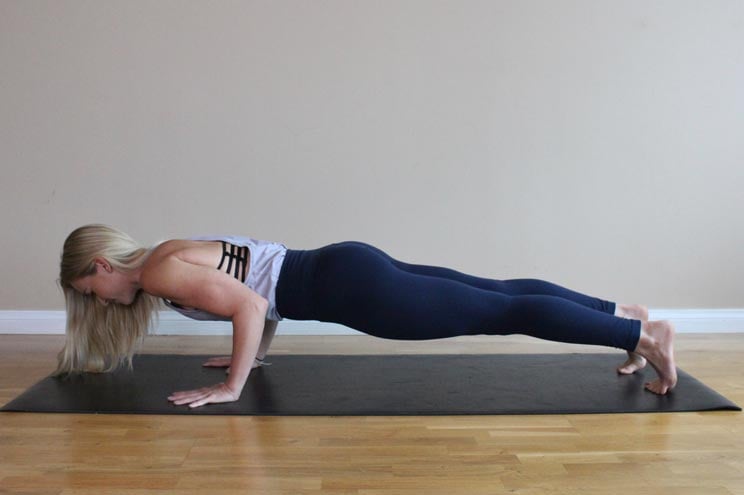
This heating pose gets the heart rate up and builds strength in the upper body and core
- Start in a push-up position with your shoulders above your wrists. Spread your fingers wide, bringing your index fingers parallel to one another, and press down through your knuckles to root down. Feel the space between your shoulder blades puff up towards the ceiling and firm up your quadriceps.
- Inhale and shift your shoulders an inch forward over your hands.
- Exhale and bend your elbows to 90 degrees, keeping your elbows hugging into your ribs. Look straight down so that the back of your neck is long.
- Hold for three breaths, then press back up to your high plank. Repeat 3-5 times.
Tip: To modify, lower your knees to the ground before bending your elbows to 90 degrees.
Warrior 2 | 10 breaths per side
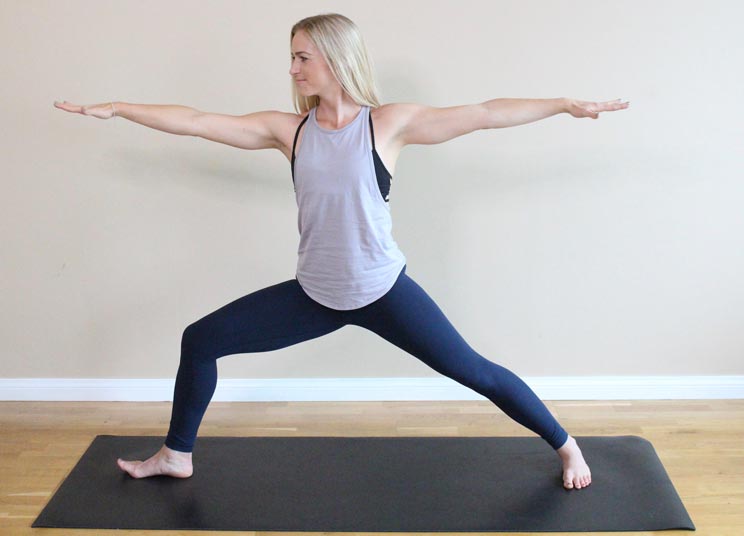
This pose energizes Kaphas by strengthening the legs, core, and quadriceps.
- Begin standing sideways on your mat with your feet out wide. Then, turn your right foot so that the toes face the top of your mat.
- Bend your right knee, bringing the thigh parallel to your mat. Reach your arms out to a T- shape, spreading your fingers wide. Gaze over your right fingertips.
- Keep your left thigh firm and your abs engaged. Feel your thighs strengthening and hold for 10 breaths. Then, switch sides.
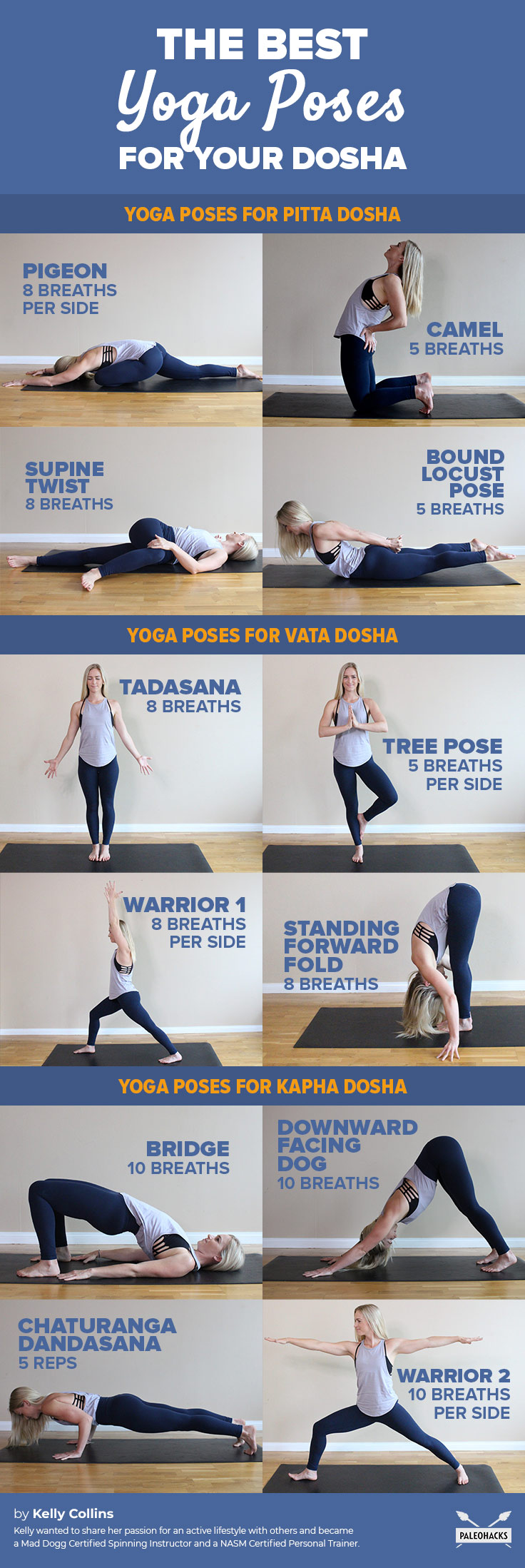
(Your Next Workout: 3 Awakening Yogic Breathing Exercises to Try Instead of Coffee


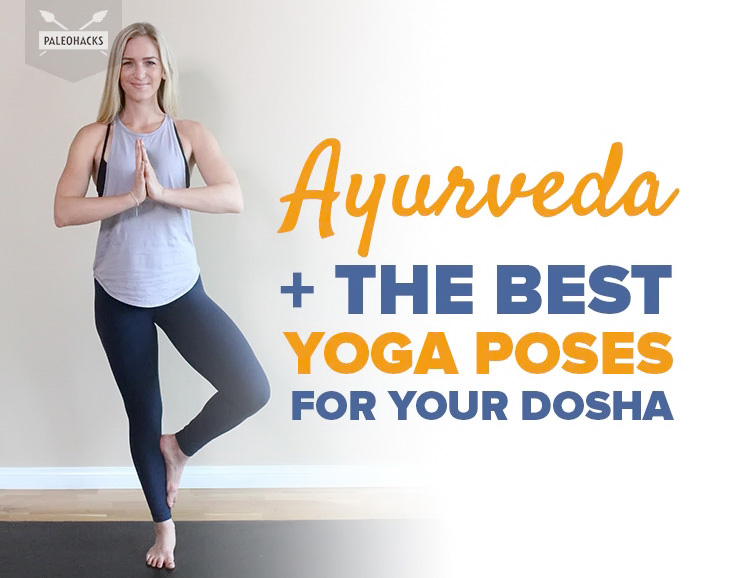
 Golden Plantain Burger Buns
Golden Plantain Burger Buns
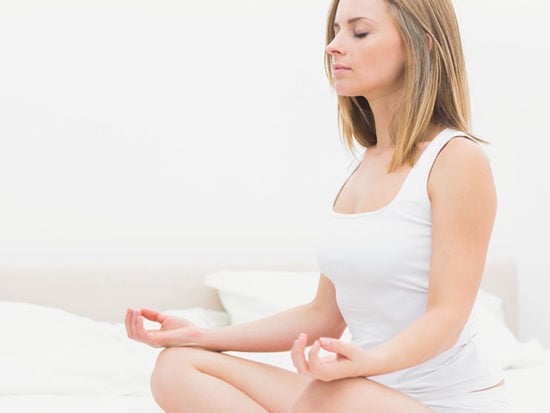
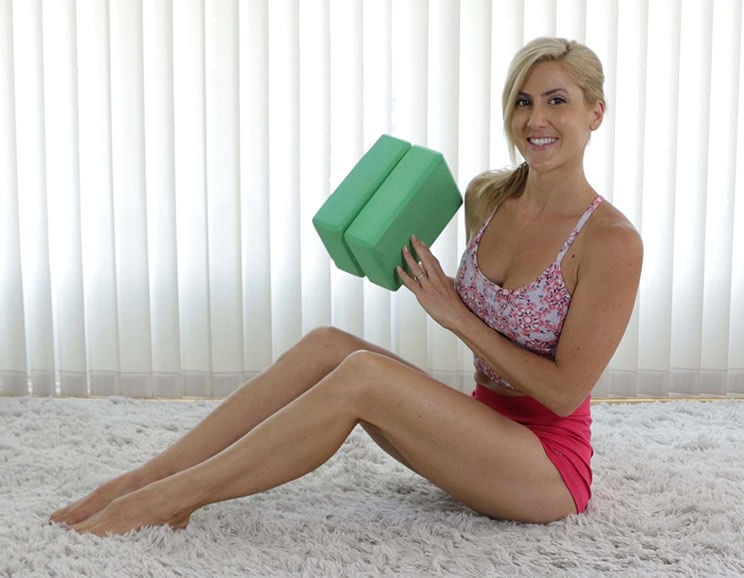
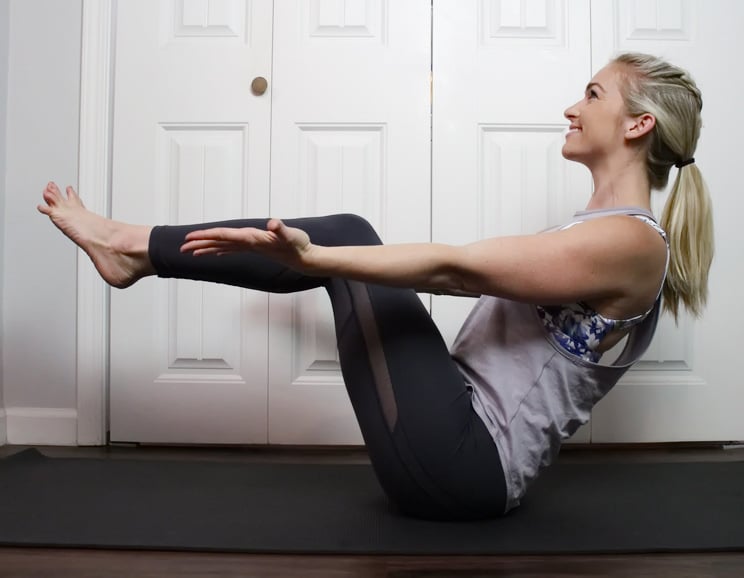
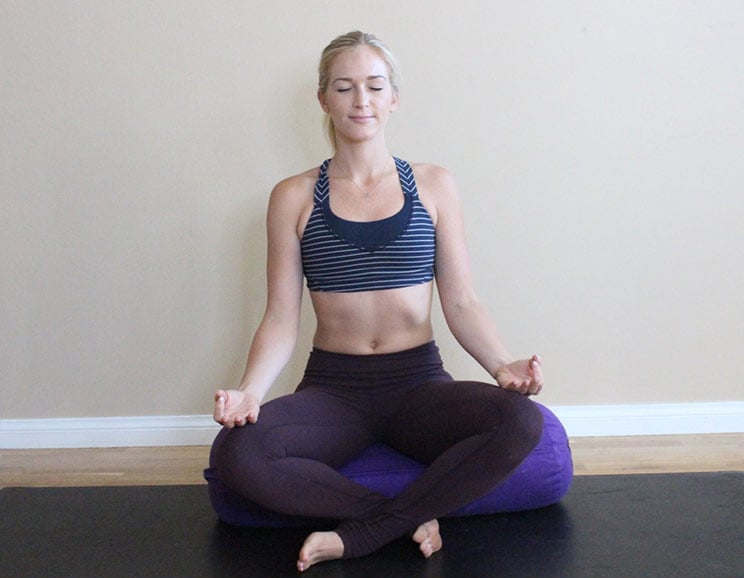
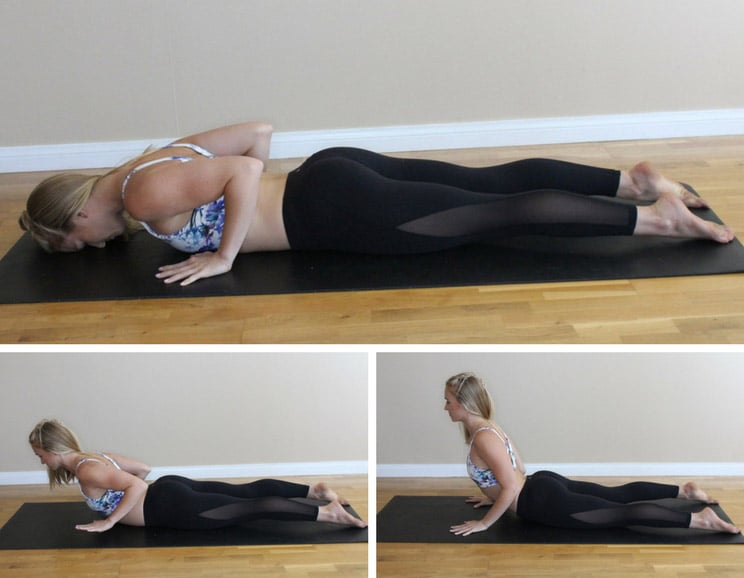
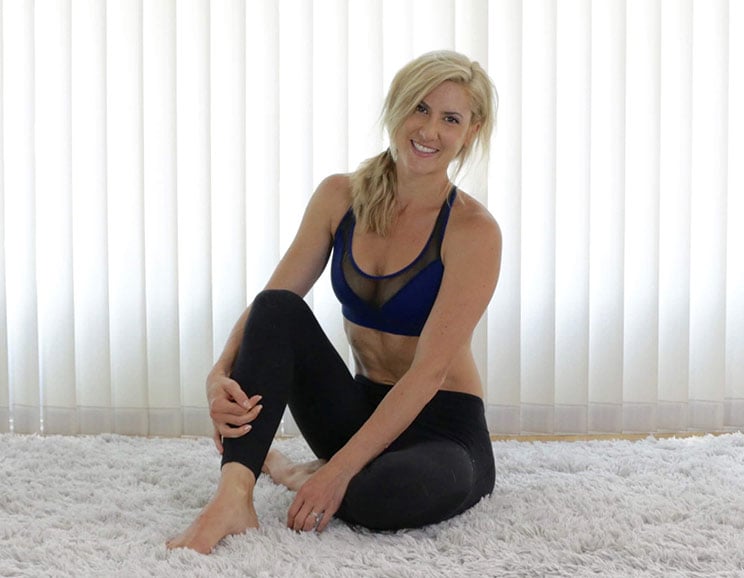
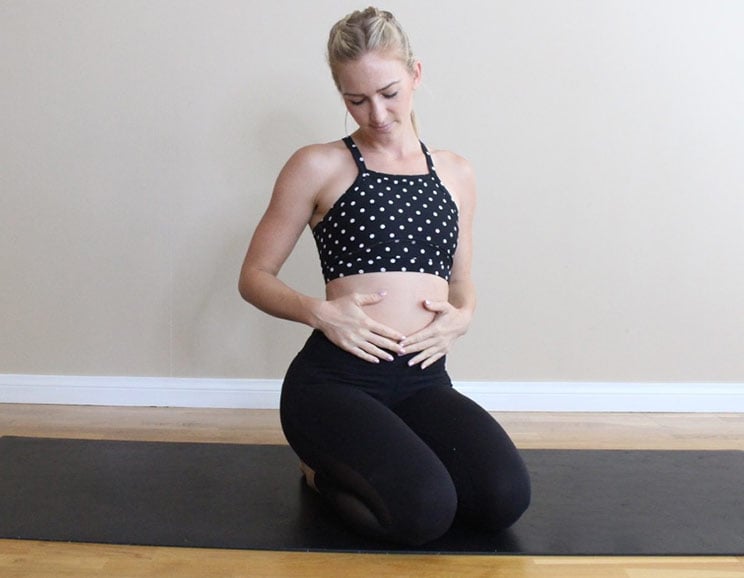
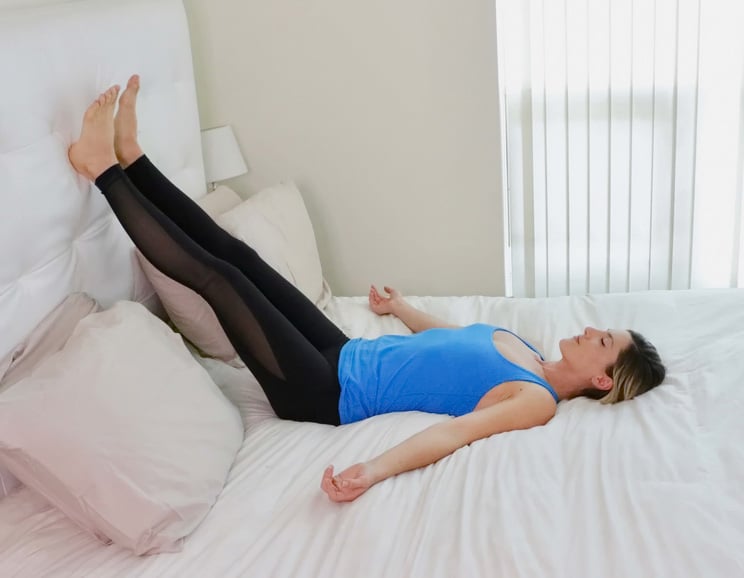
Show Comments